SNANKS
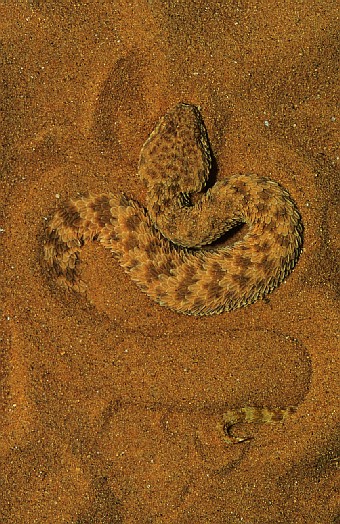
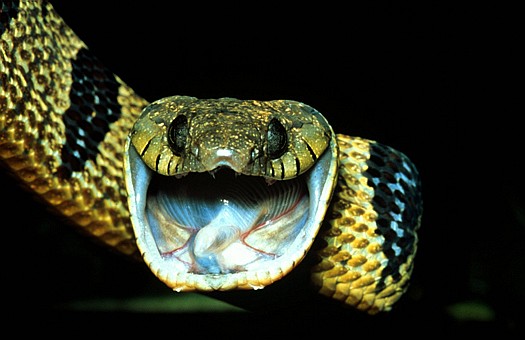 Blanding's tree snake (Toxicodryas (Boiga) blandingii), Kakamega forest, Kenya.
Blanding's tree snake (Toxicodryas (Boiga) blandingii), Kakamega forest, Kenya.
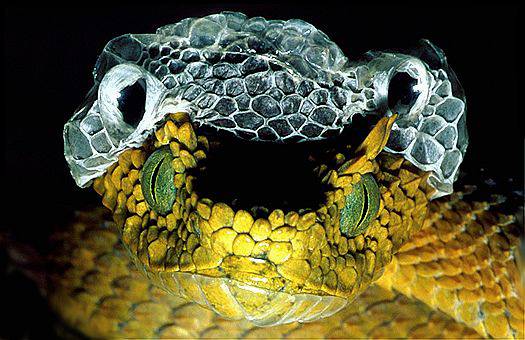 Female Usambara eyelash viper (Atheris ceratophorus), sheds its skin off. Eastern Usambara Mountains, Tanzania.
Female Usambara eyelash viper (Atheris ceratophorus), sheds its skin off. Eastern Usambara Mountains, Tanzania.
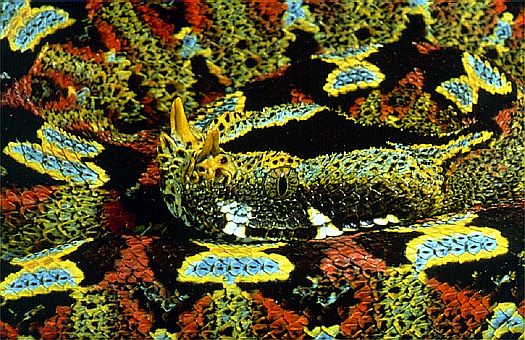
|
| Juvenile Rhinoceros viper (Bitis nasicornis), Uganda-Zaire border |
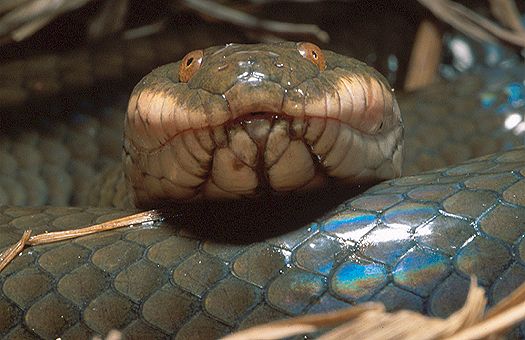
|
 Plumbeous water snake (Enhydris plumbea). Northern Vietnam. Plumbeous water snake (Enhydris plumbea). Northern Vietnam.
|
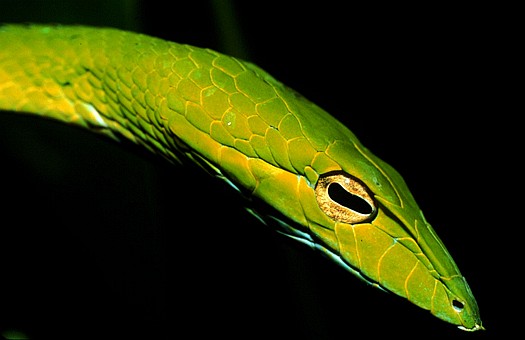
Oriental whip snake (Ahaetulla prasina) in Singapore. The keyhole shape of the pupil and the narrow snout along with the grooves front of the eye are enhancing the binocular vision of this snake which is essential in its native arboreal environment.
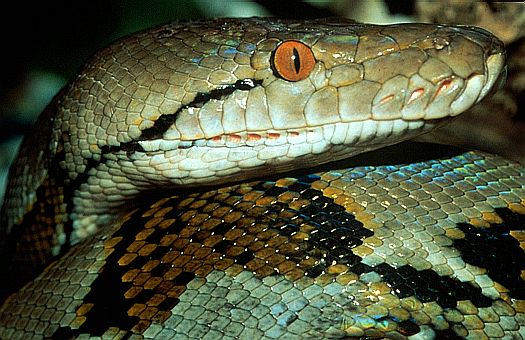
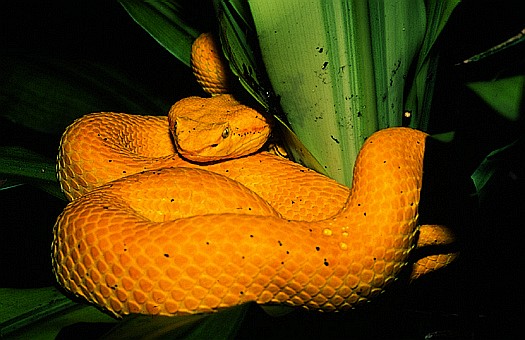 |
|
|
|
| |
 Eyelash palm-pitviper (Bothriechis schlegelii) in northeast Costa Rica. Eyelash palm-pitviper (Bothriechis schlegelii) in northeast Costa Rica. |
|
| |
| |
 Two Two |
|
|
Rhinoceros viper (Bitis nasicornis), Uganda-Zaire border.
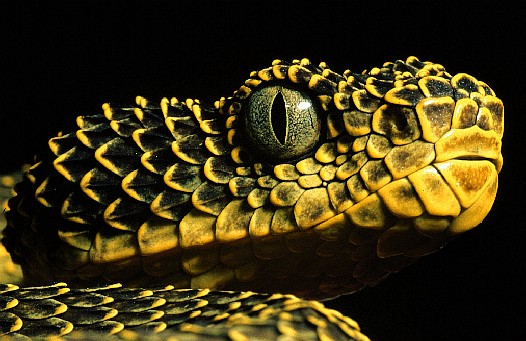
Mount Kenya bush viper (Atheris desaixi), Kenya.
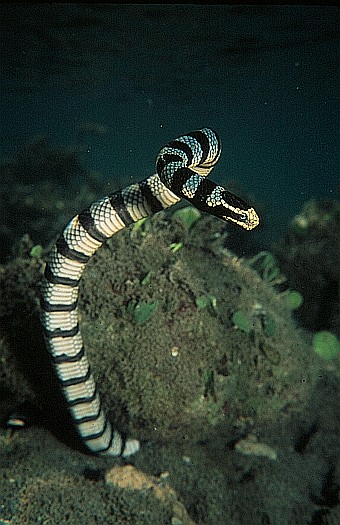 Yellow-lipped sea krait (Laticauda colubrina) in southwest Palawan, Philippines. Sea kraits inhabit two worlds, the sea and the land. They feed in the sea on eels and have several adaptations for swimming and diving not found in terrestrial snakes. However, they return to land for digestion of food, sloughing their skin, mating and laying eggs. This is the largest species of sea snake, and known to occur in high densities on small tropical islands.
Yellow-lipped sea krait (Laticauda colubrina) in southwest Palawan, Philippines. Sea kraits inhabit two worlds, the sea and the land. They feed in the sea on eels and have several adaptations for swimming and diving not found in terrestrial snakes. However, they return to land for digestion of food, sloughing their skin, mating and laying eggs. This is the largest species of sea snake, and known to occur in high densities on small tropical islands.








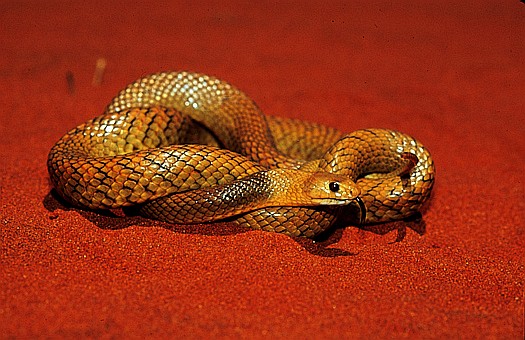
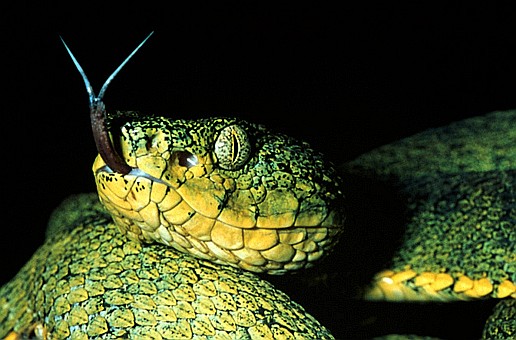

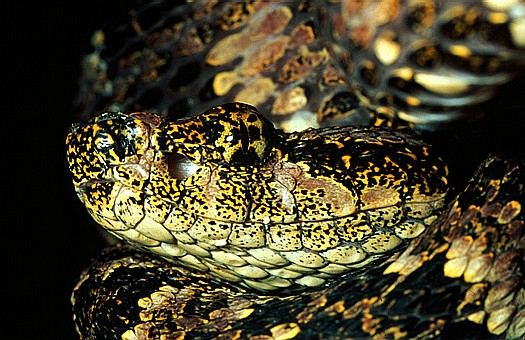
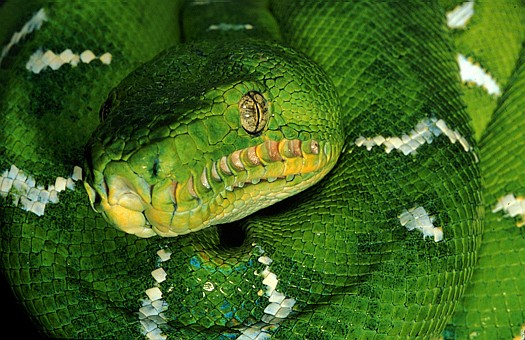
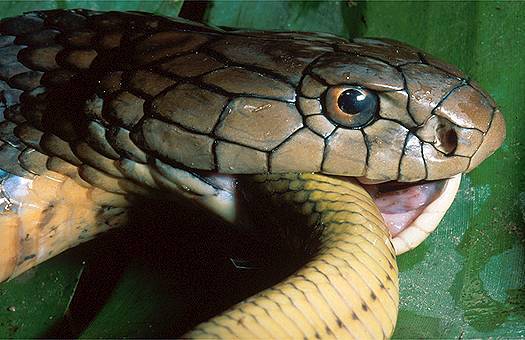

 Yellow-lipped sea krait (Laticauda colubrina) in southwest Palawan, Philippines. Sea kraits inhabit two worlds, the sea and the land. They feed in the sea on eels and have several adaptations for swimming and diving not found in terrestrial snakes. However, they return to land for digestion of food, sloughing their skin, mating and laying eggs. This is the largest species of sea snake, and known to occur in high densities on small tropical islands.
Yellow-lipped sea krait (Laticauda colubrina) in southwest Palawan, Philippines. Sea kraits inhabit two worlds, the sea and the land. They feed in the sea on eels and have several adaptations for swimming and diving not found in terrestrial snakes. However, they return to land for digestion of food, sloughing their skin, mating and laying eggs. This is the largest species of sea snake, and known to occur in high densities on small tropical islands.
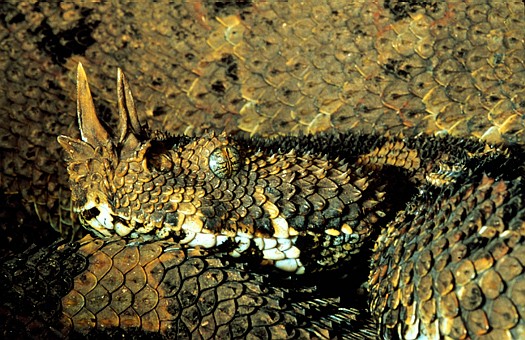
Hello Capt. Sharma,
ReplyDeleteI have visited your blog as well the Snake Cell website a number of times...
I am writing to you here with the hope that you shall provide me with some guidance, related to snake-handling and identification -the only 'tool' I have at my disposal is an old book By R K Deoras, called Snakes of India, which seems to be seriously back-dated!
I am a wildlife enthusiast myself, though I have primarily studied birds.
I have always loved snakes, and had been initiated to basic snake handling when I was a kid, by Sri Dipak Mitra.
However, I have learnt to handle snakes mostly through my own efforts, and chiefly due to the need of rescuing animals who have entered human habitats.
I presently live and work at a forest/village reconstruction project (http://babli-farm.tripod.com), where we have a LARGE collection of wild snakes - which we try our best to live with.
I have recently captured a full-grown python and a Russel's viper within our project. We releases both the snakes in the adjoining jungles. But I am not sure if that is the best option!
It would be great if I could open an e-mail communication Chanel with you - so that I can discuss some of my doubts, and get help through your knowledge and experience.
Thanks for your time!
Aaditto Shen.